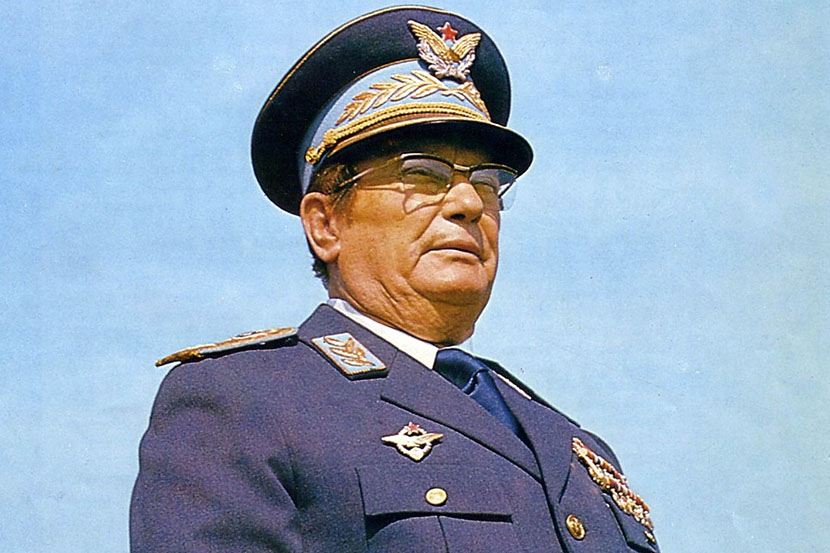
Mount Zlatar, which is located near Konjic, for decades kept the highest state military secrets of the former Socialist Federal Republic of Yugoslavia (SFRY). In this natural environment 33 years ago built the bomb shelter, a facility called D-0 ARK, which was the main command post of the former Yugoslav People's Army. For this, in addition to workers who are carefully selected and that they had to sign a contract in silence, knew only four Commander of duty .. When you look from outside, you can see three ordinary house surrounded by nature. But these houses are more than 50 years of hiding the biggest military facility, which was the third most important in the former Yugoslavia. The first is the underground Zeljava airport near Bihac, and another naval port Lora near Split. Construction of the building lasted 26 years (1953rd to 1979th) and the cost is $ 4.6 billion. Nature is hiding nuclear bunker The building, popularly known as Tito's bunker, consists of three parts. The first is visible and is called masking part, consists of three buildings: control the residence, the building of the cable securing the former president of Yugoslavia, Josip Broz Tito, and the building in which it should be placed staff for technical support. When you pass through the corridor of the first house, opens the three heavy metal door thickness of 1.20 meters, behind which there is a tunnel that takes you to the heart of the nuclear shelter at a depth of 280 meters and a length of 202 meters. The tunnels connect masking part of the III part of the building - atomic shelter that can withstand a nuclear attack strength of 20 kilotons. The walls are hand made of wood. Whole building 6,000 neon illuminates. The third part of the building is shaped like a horseshoe and it is a protected part because it contains protection systems, fire alarm system, a system for protection against nuclear attack, air ... It is divided into 12 blocks. The most important are blocks 6 (communication), 8 (Titov block), 9 (lung object-air), 10 (fuel) and 11 (water). Facility with ideal conditions for life In the event of the threat of nuclear attack bunker was ready to receive 350 people from the highest military and political leadership of the former Yugoslavia. They could stay there six months Without any contact with the outside world, because it contains everything that is necessary for normal life. Bunker covers a total of 6,854 m², has more than 100 sleeping rooms with comfortable beds, two large conference rooms, five operational centers with direct phone links with the Presidency of the Federal Republic and cable TV, two kitchens, five large toilets, crypto center, a hospital with operating room. .. Inside the building there is a larger number of rooms for a total of 21 system maintenance. It contains two containers with 50 tons of oil, two types of climate, a swimming pool with 170 cubic meters of water, running water and technical from natural wells located in the mountain. Each system has an alternative in case the first fails. Tito's residence in this building is equipped elite. It consists of five rooms: room for a secretary and party leads in Tito's office linked to the bedroom, and from it you enter the room first lady of the former Yugoslavia Jovanka Broz, while the last room to relax. The temperature in the bunker is between 21 and 23 degrees Celsius and humidity of 60 to 70 percent, which represents the ideal conditions for life. From the house there is a forced exit, which is not marked on the map. It leads to the hill above the building height of 170 meters, which can reach the relay node on the mountain Zlatar. JNA was about to destroy Since the beginning of the war in Bosnia and Herzegovina began to lead negotiations on who will get this military facility. General Milutin KUKANJAC, then commander of the seventh army district of the JNA, he ordered, on the night between 7 and 8 May 1992, to destroy the facility ARK. "Destroy everything you can not take it," was the order that was supposed to activate 4,500 kilograms of TNT, which has already been set up in the bunker and this facility would have taken away to the ground. But, thanks to the people who were members of the JNA, and they loved this country, and retired Colonel Sharif Grabovica, that did not happen. Grabovica is secretly managed to pull up all the wires to the explosives and the object is saved. Members of the Army of BiH took over on 11 May 1992. Thanks to stocks that are in it contained, and RBH had oil, medicine, food, blankets and all that was necessary for survival. Blend of art and history Tito's bunker today is a meeting place for artists from the region, Europe and the world. Last year, from 27 May to 27 September held the first Biennial of Contemporary Art. Brought together 44 artists from 18 countries around the world, and there were more than 15,000 visitors. Then he raised the 50 works of art that have become a permanent item of this business. The financing of the project involved five countries: Serbia, Montenegro, Turkey, Croatia and Bosnia and Herzegovina. Second Biennial will be held 26 April next year. A facility is now cares five soldiers, belonging to the Ministry of Defense.
Copyright © 2015 Ljetna bašta Boračko jezero. Sva prava pridržana | Dizajn Willsoft Computers